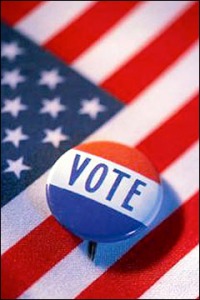At long last the election is finally here, but we still can’t predict the presidential outcome with any confidence. Recognizing that there have been many conflicting national polling factors present for the past several weeks, now at the end of the campaign it appears that all of the major pollsters are projecting just about the same final national popular vote result – a virtual tie.
Seven polls were released on Thursday through Saturday, and four of them (Ipsos/Reuters, Rasmussen Reports, UPI/C-Voter, and Zogby for the Washington Times) produced a high-40s deadlock between Pres. Barack Obama and Republican challenger Mitt Romney. Two (Purple Strategies and Public Policy Polling) forecast a one-point lead for Obama. One, the ABC/Washington Post poll, showed Romney with that same single-point advantage. Simply put, the national election doesn’t get any closer.
Good news actually exists for both candidates in these final surveys. First, bringing the candidates back into a tie is positive for the president, who had been starting to drop behind. On the other hand, and an argument in Romney’s favor, an incumbent tied going into the election is rarely a good sign, because challengers typically under-poll to at least a small degree.
On the state front, Ohio still appears to be the deciding factor. There are some favorable indications that Romney will win close victories in North Carolina and Florida, which are his top priority conversion states. He also is trending upward in Virginia, but the all-important Buckeye State remains a mystery. The president has a slight edge in several polls, but not in others.
Looking at the secondary states, though Nevada and possibly Iowa look to remain in the president’s column, Romney is getting strong positive signs from Colorado. Should he be successful in taking Virginia and Ohio, Colorado would clinch a victory for the challenger.
Polling
There has been a great deal of analyses done about the myriad of polls conducted over the past months, and the conflicting nature between the ones that have projected the 2012 vote using a turnout model based upon 2008 voting patterns. Many have said that using such base data explains the polling discrepancies because the 2012 electorate is much different than that of four years ago. Therefore, using the 2008 model may skew too heavily Democratic.
Mike Barbera, a Washington lobbyist and guest columnist for our reports, has studied this situation, and offers the following perspective: Given all available evidence, the idea that the 2012 electorate will be as Democratic as 2008 is implausible – and the notion that it will be even more Democratic is to be completely rejected.
The 2008 election cycle featured the following:
- A highly motivated Democratic base, enthused by the historic candidacy of Barack Obama and still seething with animus toward George W. Bush
- A dispirited Republican base (although the Palin vice presidential selection remedied this to a certain degree)
- A historically-unpopular outgoing Republican president
- A huge funding disparity, which allowed the Obama campaign to dramatically outspend the McCain forces on the airwaves and in the get-out-the-vote (GOTV) efforts
- An economic meltdown a month before Election Day
That is a recipe for what a great Democratic year looks like – and indeed the Democrats in 2008 had a great year. They elected a president as well as super-majorities in both the House and Senate.
To put it mildly, 2012 looks nothing like 2008. By any measure, Republican enthusiasm is much higher than in 2008. Obama’s favorability ratings are significantly lower than they were in 2008. His job approval ratings are dismal. Romney and his GOP allies are at financial parity with the Obama campaign and the Democrats – so the Republican GOTV efforts are vastly improved from the threadbare McCain operation of 2008. Romney is doing very well among independents – John McCain lost them by a substantial margin.
Early Voting
States are reporting the number of ballots already returned through the various early voting processes. While all of the partisan numbers, i.e. the ballots returned from registered Democrats, Republicans, and unaffiliated voters, are better for Romney and the Republicans than the ratios from four years ago, it is unclear if they are a precursor to a Romney victory performance.
The Romney camp compares the current early voting trends to that of 2008 GOP nominee John McCain and illustrates what they believe is their candidate’s improvement over his showing. While there seems no doubt that the already returned ballots will yield better results for the Republican, as the Obama campaign points out, Romney must exceed the president’s vote total, not just that of McCain, and in every state but Colorado (that releases early voting partisan registration data) more Democratic ballots have been returned than Republican. All totaled, almost 30 million people have already voted in this election.
The Senate
Democratic trends in the statewide contests are better than for Republicans. It now appears likely that the Democrats will retain control of the Senate and do so with about the same level of strength they currently maintain: a seat up or down from the current 53D-47R margin.
The House
While the Senate races appear to be trending Democratic, the Republicans are pulling away in the House. The GOP majority is secure, and their original majority margin, based upon 242 seats, could even increase by as many as three or four seats when analyzing the final individual race trends.
Conclusion
This election is very close, and could be following one of two election models. The first would be that of 1980, where Ronald Reagan was running close to incumbent President Jimmy Carter, only to catch a wave at the very end and go onto a major landslide victory. The second potential precursor is the 2004 election, where a relatively unpopular incumbent President, George W. Bush, won a close victory that basically came down to the state of Ohio becoming the deciding factor. Determining the actual result is now merely hours away.



